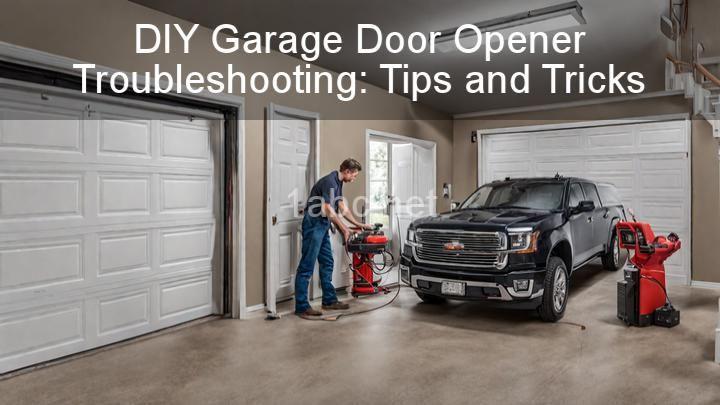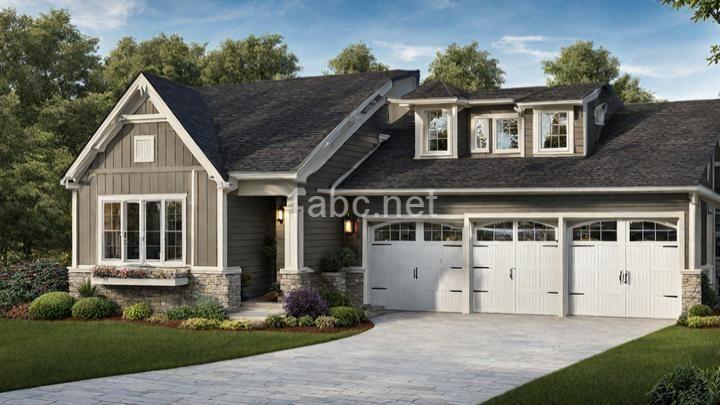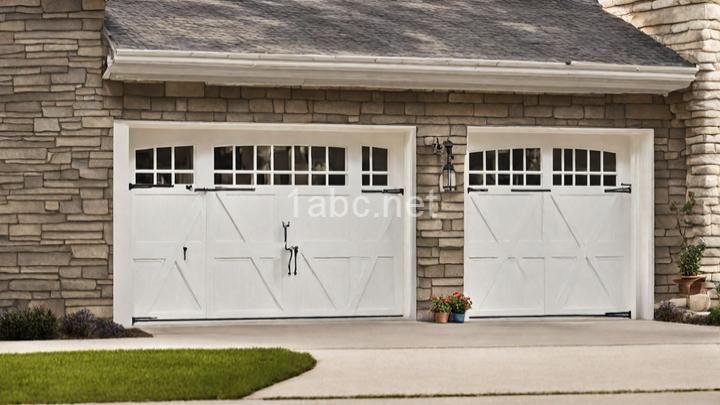DIY Garage Door Opener Troubleshooting: Tips and Tricks
Introduction:
I. Basic Checks:
1. Ensure power supply:
2. Check remote batteries:
3. Inspect safety sensors:
II. Common Problems and Solutions:
1. Verify the manual release mode:
2. Check for obstruction:
3. Adjust limit settings:
1. Reprogram the remote control:
2. Replace remote batteries (if not done already):
1. Lubricate moving parts:
2. Tighten loose components:
III. Advanced Troubleshooting:
Conclusion:

Introduction:
Welcome to our friendly guide on troubleshooting common issues with your garage door opener. Your garage door is an essential part of your home, providing security and convenience. However, like any mechanical device, it can develop problems over time. In this blog post, we will provide you with easy-to-follow tips and tricks to help you get your garage door back in working order without having to call a professional. So grab your tools and let's dive in!
I. Basic Checks:
Before we get into the nitty-gritty of troubleshooting your garage door opener, it's important to perform some basic checks to ensure that the problem is not something simple that can be easily fixed. Here are a few things you should check:
1. Ensure power supply:
The first step is to check if the garage door opener is properly plugged in and if there is electricity supply. Sometimes, a loose or disconnected power cord can cause the opener to malfunction. Ensure that the power cord is securely plugged into a working electrical outlet. If the outlet is dead, try plugging something else into it to confirm if the problem lies with the outlet or the opener.
2. Check remote batteries:
If your remote control is not working, it may simply be a matter of dead batteries. Replace the batteries with fresh ones and make sure they are inserted correctly. Sometimes, the remote control may need to be reprogrammed after changing the batteries, so refer to the manufacturer's instructions for the correct procedure.
3. Inspect safety sensors:
Modern garage door openers are equipped with safety sensors that prevent the door from closing if there is an obstruction in its path. These sensors are usually located near the bottom of the door tracks and emit an invisible beam. Make sure the sensors are aligned and clean from any obstructions like dust or debris. If the sensors are misaligned, carefully adjust them until the indicator lights on both sensors are lit.
II. Common Problems and Solutions:
Now that you have performed the basic checks and ensured everything is in order, let's move on to some common problems you may encounter with your garage door opener and their solutions.
A. Garage Door Doesn't Open or Close:
1. Verify the manual release mode:
Sometimes, the emergency release cord may accidentally get engaged, preventing the garage door opener from working. This cord is usually red and hangs down from the opener unit. Check if the cord is pulled or in the disengaged position. If it is engaged, simply pull the cord towards the door until it clicks back into place.
2. Check for obstruction:
If your garage door doesn't open or close all the way, there may be an object blocking its path. Inspect the area around the door and remove any debris or obstacles that may be hindering its movement. It's also a good idea to clear any snow or ice buildup during the winter months.
3. Adjust limit settings:
If the door only partially opens or closes, it may be due to incorrect limit settings. Most garage door openers have adjustable open and close limit settings that control how far the door travels. Consult your opener's manual for instructions on how to adjust these settings. By adjusting the limit settings, you can ensure that the door opens and closes fully.
B. Remote Control Issues:
1. Reprogram the remote control:
If your remote control is not working, it may need to be reprogrammed. Each manufacturer has its own specific instructions for reprogramming, so refer to the manual that came with your opener. Typically, you will need to press a combination of buttons on the remote and the opener unit to sync them together.
2. Replace remote batteries (if not done already):
We mentioned earlier that dead batteries can be the reason why your remote control is not working. If you haven't replaced the batteries yet, now is the time to do so. Ensure that you use fresh batteries and insert them correctly, following the polarity markings.
C. Noisy Garage Door Opener:
Is your garage door opener making loud and unpleasant noises? Don't worry, there are a couple of things you can do to reduce the noise.
1. Lubricate moving parts:
Over time, the moving parts of your garage door opener, such as the rollers, hinges, tracks, and springs, can become dry and cause friction. This friction not only leads to noise but also puts strain on the opener motor. To reduce noise and prolong the life of your opener, apply a lubricant specifically designed for garage doors to these moving parts. Be sure to wipe off any excess lubricant to prevent it from dripping onto your car or the floor.
2. Tighten loose components:
The constant movement of the garage door can cause nuts, bolts, screws, and mounting brackets to become loose. These loose components can contribute to the noise your opener makes. Inspect all the hardware and tighten any loose parts using the appropriate tools. This simple step can make a significant difference in the noise level of your garage door opener.
D. Garage Door Reverses Immediately after Touching Ground:
If your garage door starts to close but immediately reverses after touching the ground, there may be an issue with the sensitivity settings on your opener unit. This safety feature is designed to prevent the door from closing on objects or people. Adjust the sensitivity settings according to the manufacturer's instructions until the problem is resolved. It may take a few adjustments to find the right balance between sensitivity and functionality.
III. Advanced Troubleshooting:
If you have followed the basic checks and common solutions outlined above but still can't get your garage door opener to work properly, it may be time to call a professional garage door technician. They have the expertise and tools to diagnose and fix complex problems that may be beyond the scope of DIY troubleshooting. Additionally, tampering with certain components of your garage door opener without proper knowledge can be dangerous. So, when in doubt, it's always better to leave it to the professionals.
Conclusion:
By following these friendly troubleshooting tips and tricks, you can save time and money by resolving common garage door opener issues on your own. Remember, safety is paramount when working with your garage door. Always exercise caution, especially when dealing with electrical components or heavy machinery. If in doubt, consult a professional and enjoy the convenience of a properly functioning garage door opener!
FREQUENTLY ASKED QUESTIONS
How can I troubleshoot my garage door opener?
Troubleshooting a garage door opener can be done by following these steps:
- Check the power supply: Ensure that the opener is plugged in and receiving power. You can also check the circuit breaker to make sure it hasn't tripped.
- Inspect the remote control battery: Replace the battery in the remote control if it's low or not functioning properly.
- Examine the safety sensors: Make sure the safety sensors located at the bottom of the garage door are clean and aligned properly. If they are dirty or misaligned, clean them and adjust their position.
- Inspect the door tracks and rollers: Check the door tracks for any obstructions and ensure that the rollers are moving smoothly along the tracks. Clean and lubricate the tracks and rollers if needed.
- Reset the opener: Consult your garage door opener's manual to find instructions on how to reset the opener. This may involve unplugging the opener, waiting for a few minutes, and then plugging it back in.
- Test the wall switch: Verify that the wall switch is working by pressing it to see if it activates the opener. If it doesn't, there may be an issue with the switch itself.
- Consult a professional: If none of the above steps resolve the issue, it may be best to contact a professional garage door technician to diagnose and fix the problem.
Remember to always prioritize safety when troubleshooting your garage door opener.
My garage door opener is not responding, what should I do?
If your garage door opener is not responding, here are a few steps you can try to troubleshoot the issue:
- Check the batteries: Ensure that the batteries in your garage door opener remote are not dead. Replace them if necessary.
- Check the power source: Make sure that the power source to your garage door opener is not disrupted. Check the circuit breaker or fuse connected to it.
- Inspect the antenna: Examine the antenna on your garage door opener to ensure it is undamaged and properly positioned.
- Reset the opener: Try resetting the garage door opener by unplugging it from the power source for a few minutes, and then plugging it back in.
- Reprogram the remote: If the remote is still not working, try reprogramming it by following the instructions provided by the manufacturer.
- Inspect the sensor: Check the sensor near the bottom of the garage door to make sure it is not blocked or misaligned. Clean any dirt or debris that may obstruct the sensor.
If none of these steps solve the issue, it may be best to consult a professional garage door technician for further assistance.
Why is my garage door opener making strange noises?
There could be several reasons why a garage door opener is making strange noises. Here are some common causes:
- Lack of lubrication: Over time, the moving parts of a garage door opener can dry out and cause friction, resulting in strange noises. Lubricating the tracks, rollers, hinges, and other moving parts with a silicone-based lubricant can help reduce the noise.
- Loose hardware: Vibrations from regular use can cause nuts, bolts, and screws to loosen. Check the hardware on your garage door opener and tighten any loose parts to minimize noise.
- Worn-out rollers or hinges: The rollers and hinges that allow the garage door to move smoothly can wear out over time. Inspect these components for signs of wear or damage, and replace them if necessary.
- Malfunctioning motor or gears: If your garage door opener is making grinding or scraping noises, it could indicate a problem with the motor or gears. In this case, it may be best to consult a professional technician to diagnose and repair the issue.
Remember, regular maintenance and inspections can help prevent unusual noises from occurring in the first place. If the noise continues or worsens, it is recommended to seek professional assistance to avoid any potential damage or safety hazards.
How can I fix a garage door opener that is not closing or opening fully?
There are several possible causes for a garage door opener that is not closing or opening fully. Here are a few steps you can take to troubleshoot and fix the issue:
- Check the safety sensors: Make sure that the safety sensors located near the floor on either side of the garage door are clean and aligned properly. If they are misaligned or obstructed, they can prevent the door from fully closing or opening. Adjust them if necessary and remove any debris that may be blocking their path.
- Inspect the tracks and rollers: Examine the tracks and rollers for any debris or obstructions that may be preventing the smooth movement of the door. Clean the tracks and lubricate the rollers with a silicone-based lubricant to ensure they operate smoothly.
- Check the limit settings: Most garage door openers have limit settings that control how far the door opens or closes. If these settings are misaligned, the door may not reach its fully open or closed position. Consult your opener's manual and adjust the limit settings accordingly.
- Test the force settings: Excessive force settings on the opener can cause it to stop prematurely while opening or closing the door. Adjust the force settings to the appropriate level as recommended by the manufacturer.
- Inspect the door cables and springs: If the door cables or springs are worn out or damaged, they can impact the smooth operation of the door and prevent it from opening or closing fully. It is recommended to have a professional technician inspect and replace any damaged components.
Remember, if you are unsure about performing any of these steps or if the issue persists, it is always best to consult a professional garage door repair technician for assistance.

